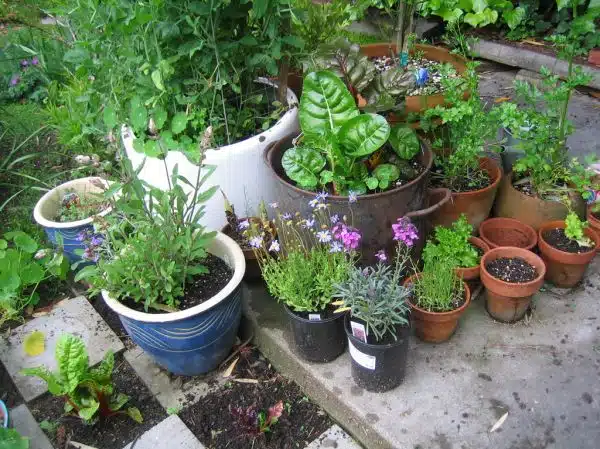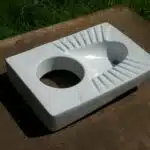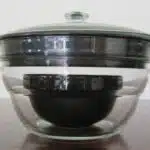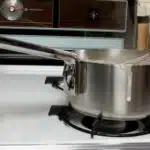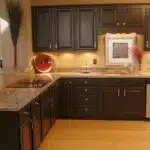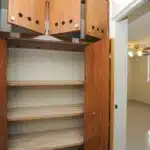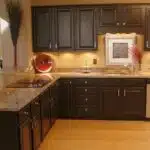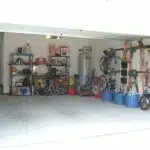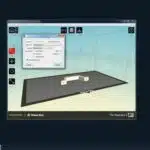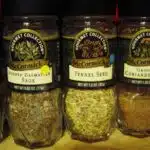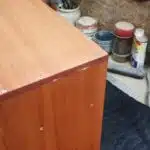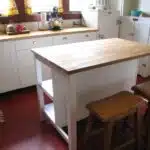As a professional kitchen organizer, I have encountered many clients who struggle with decluttering and organizing their pots and pans. While it may seem like a simple task, the reality is that pots and pans take up a significant amount of space in the kitchen, making it challenging to keep them organized and accessible for use.
In this article, we will discuss practical tips on how to organize pots and pans in any kitchen. These tips will not only help you save space but also make your cooking experience more enjoyable and efficient. Whether you are an aspiring chef or just someone who loves to cook for their family, these techniques will enable you to maximize your kitchen’s potential while maintaining orderliness and functionality.
Assess Your Current Storage Space
Maximizing space in any kitchen requires careful planning and consideration. Before organizing pots and pans, it’s crucial to assess your current storage space to determine what creative storage solutions are possible. Take a close look at your available cabinets, drawers, and shelves and make note of their size, shape, and location.
One way to maximize your existing space is by utilizing vertical storage solutions. This can include installing hooks or racks on the walls or ceiling above your stove or countertops. Another option is to use stackable organizers or adjustable shelving systems inside cabinets or drawers. By making use of every inch of available space, you can create a more functional kitchen that meets all of your needs.
In addition to assessing your current storage space, consider the types of pots and pans you own and how frequently you use them. This will help you determine which items should be stored in easily accessible areas versus those that can be tucked away in less convenient spots. With a little creativity and smart planning, you can optimize your kitchen’s layout for maximum efficiency and convenience while keeping all of your cookware organized and within reach.
Transition: Now that we have assessed our current storage space, let’s move on to determining our cooking needs to further streamline our organization efforts.
Determine Your Cooking Needs
- To determine your cooking needs, it is important to first analyze your kitchen space in order to determine the best way to maximize the use of the available space.
- You should also determine your cooking style in order to properly identify the types of pots and pans that are essential to your cooking.
- Consider the types of meals you prepare and the frequency with which you cook when assessing your cooking style.
- When selecting pots and pans, think about the types of ingredients you use and the size of the food items you are cooking.
- Look for quality items that are properly sized, durable, and easy to use when selecting pots and pans.
- Invest in items that will provide the greatest benefit to your cooking needs and will serve you well in the long term.
Analyze Your Kitchen Space
When it comes to organizing pots and pans in any kitchen, the first step is to analyze your kitchen space. This involves assessing the functionality of your kitchen area and identifying areas that can be optimized for storage. A well-organized kitchen not only makes cooking easier but also ensures that you have easy access to all your cookware.
To optimize space, consider using vertical storage solutions such as pot racks or hanging hooks to free up counter space and cabinets. You can also use pull-out drawers or adjustable shelving units to create more storage options within your cabinets. Don’t forget to assess the functionality of your cabinets too; make sure they are deep enough for storing larger pots and pans.
Overall, analyzing your kitchen space is crucial when it comes to organizing pots and pans. By assessing functionality and optimizing space, you can ensure that all your cookware is easily accessible while keeping your kitchen clutter-free. With a little bit of creativity, you can transform even the smallest kitchen into a functional and organized cooking space.
Determine Your Cooking Style
When it comes to organizing your kitchen, it’s important to determine your cooking needs before jumping into any storage solutions. One of the key factors to consider is your cooking style. Identifying your cooking preferences can help you determine the types and sizes of pots and pans you need, as well as how frequently you use them. This information will be crucial in deciding where and how to store them.
To determine your cooking style, analyze your kitchen layout and consider the types of meals you typically prepare. Do you enjoy baking or grilling? Do you cook mostly one-pot meals or multiple dishes at once? These questions will help you determine which pots and pans are essential for your cooking needs. For example, if you love baking, a set of baking sheets and cake pans may be a priority for storage.
Once you’ve identified your cooking preferences, it’s time to think about how best to store your pots and pans. Depending on how frequently you use certain items, they may need to be stored in an easily accessible location. If space is limited in your kitchen, vertical storage options like pot racks or hanging hooks can free up counter space and cabinets. With careful consideration of both your cooking style and available storage options, organizing your pots and pans can make meal preparation simpler and more enjoyable.
Identify Essential Pots And Pans
In order to efficiently organize your kitchen, it is essential to determine your cooking needs. This involves identifying your cooking style and the types of meals you typically prepare. Once you have a clear understanding of these factors, you can then begin to choose the essential pots and pans that will best suit your needs.
When selecting must-have types of pots and pans, consider the materials used in their construction. Stainless steel is a popular choice due to its durability, ease of cleaning, and ability to evenly distribute heat. Cast iron is another favored option for its non-stick properties and versatility in high-heat cooking. Non-stick cookware is ideal for those who prefer low-fat cooking or easy clean-up.
Once you have determined which pots and pans are essential for your cooking needs, it’s time to think about how best to store them. Consider vertical storage options like pot racks or hanging hooks, as they can help free up counter space and cabinets. Additionally, frequently used items should be stored in an easily accessible location while less frequently used items can be stored in a less convenient location. With careful consideration of both your must-have types of pots and pans and available storage options, organizing your kitchen can make meal preparation simpler and more enjoyable for both you and those you serve.
Create A Sorting System
When it comes to organizing pots and pans in your kitchen, having a sorting system is essential. A well-organized system can save you time and maximize space in your kitchen. Here are some creative solutions for creating a sorting system that works for you.
First, consider using hooks or a hanging rack to store your pots and pans. This is a great option if you have limited cabinet space or want to free up some shelf space for other items. Hanging your pots and pans not only saves space but also adds a stylish touch to your kitchen decor.
Secondly, use dividers or organizers inside your cabinets to keep your pots and pans separated and easily accessible. This makes it easy to find the pot or pan you need without having to dig through a pile of cookware. You can also stack smaller pans inside larger ones to save even more space.
Thirdly, consider investing in vertical storage racks that can be mounted on the wall or the back of a door. These racks are perfect for storing baking sheets, muffin tins, cutting boards, and other flat cookware items. They keep everything organized and within reach while maximizing the available space in your kitchen.
To summarize, maximizing space and finding creative solutions is key when organizing pots and pans in any kitchen. Using hooks or hanging racks, dividers or organizers inside cabinets, and vertical storage racks are all great options for creating an efficient sorting system that works for you. Now that we’ve covered some general tips on organizing pots and pans let’s move on to considering the frequency of use when determining where to store different types of cookware in your kitchen.
Consider The Frequency Of Use
One of the essential aspects to consider when organizing your pots and pans is the frequency of use. Assessing space and finding the right balance for your cookware can be a challenging task, but it is crucial to optimize your kitchen’s functionality.
Start by identifying which pots and pans you use frequently. These items should be easily accessible for efficient meal preparation. To achieve this, consider storing them in a separate area, such as a hanging rack or cabinet near the stovetop. Additionally, if you have limited storage space, prioritize the essentials and donate or sell any unused cookware.
On the other hand, infrequently used cookware should be stored away in less accessible areas such as high cabinets or even offsite storage. This will free up valuable space for items that are used more frequently while ensuring that all of your pots and pans have their designated place. By considering frequency of use when organizing your kitchen, you can ensure a streamlined cooking experience that maximizes both convenience and efficiency.
By assessing space and frequency of use when organizing your pots and pans, you can find the right balance for optimal kitchen functionality. However, even with limited cabinet or countertop space, there are creative ways to store your cookware effectively. In the next section, we will discuss how to utilize vertical storage solutions to maximize your kitchen’s potential without sacrificing style or practicality.
Utilize Vertical Storage
Maximizing space in any kitchen is essential, particularly when it comes to storing pots and pans. Utilizing vertical storage is one of the best ways to free up valuable counter or cabinet space. The benefits of vertical storage are undeniable: it saves time, reduces clutter, and makes finding the right pot or pan much easier.
To make the most out of your kitchen’s vertical space, consider these four tips:
- Install shelves – Installing shelves on your walls can open up a lot of space that would otherwise go unused. You can use these shelves to store pots and pans that you use frequently or even as a display for decorative cookware.
- Use hooks – Hooks are an inexpensive way to add extra storage to your kitchen walls or ceiling. They are perfect for hanging pots and pans with handles, freeing up precious cabinet space.
- Create a pegboard – Pegboards are an excellent way to keep your pots and pans organized while also maximizing vertical space. You can customize the board based on your needs by adding hooks, shelves, or other storage solutions.
- Invest in a pot rack – Pot racks come in various shapes and sizes, making them a versatile option for any kitchen. Hanging pots and pans from a pot rack frees up valuable cabinet space while also giving your kitchen a professional look.
In summary, utilizing vertical storage in your kitchen is an effective way to maximize space while keeping your pots and pans organized and easily accessible. By installing shelves, using hooks, creating a pegboard, or investing in a pot rack, you can create more room in your cabinets and have everything at arm’s reach when cooking meals without sacrificing style or functionality.
To take this organization method further, installing a pot rack is an excellent choice that not only optimizes vertical storage but also provides easy access to your most-used cookware pieces.
Install A Pot Rack
It’s a common dilemma for many homeowners: how do you maximize space in your kitchen while keeping all your pots and pans organized? The answer lies in installing a pot rack. Not only does it free up precious cabinet space, but it also adds a touch of sophistication to any kitchen.
Choosing the right pot rack can seem overwhelming at first, but it doesn’t have to be. Start by assessing the size of your kitchen and the number of pots and pans you own. If you have limited space, consider a wall-mounted rack or a ceiling-mounted pot rack that hangs over an island or stove. Alternatively, if you have ample room, a standing pot rack is an excellent option.
When choosing the material for your pot rack, keep in mind that durability is key. A wrought-iron or stainless steel pot rack will last longer than one made of wood or plastic. Additionally, consider the weight capacity of each individual hook or shelf when deciding which model to purchase. By taking these factors into account, you can ensure that your new pot rack will not only look great but also function well for years to come.
| Pros | Cons |
|---|---|
| Frees up cabinet space | May require professional installation |
| Adds visual appeal to kitchen | May limit placement options |
| Organizes pots and pans for easy access | Takes up overhead space |
With the right pot rack in place, organizing your pots and pans has never been easier. However, if you still find yourself struggling to keep everything neat and tidy, consider using drawer dividers as an additional organizational tool. By separating different sizes and types of cookware into their designated drawers, you’ll save time searching for specific items and improve the overall functionality of your kitchen setup.
Use Drawer Dividers
Installing a pot rack is an excellent solution for organizing pots and pans in your kitchen. However, if you don’t have the space or budget for one, drawer organization is another option that can increase kitchen efficiency. By using drawer dividers, you can separate your pots and pans and keep them organized.
Drawer dividers come in various sizes and materials to fit any kitchen’s needs. You can choose from plastic, bamboo, or metal dividers to create compartments that suit the size of your pots and pans. This method also allows you to store other items like lids, cutting boards, and baking sheets in the same drawer.
Kitchen efficiency is essential when it comes to meal preparation. By keeping items close at hand and organized, cooking becomes more manageable and less stressful. Drawer organization maximizes space while providing easy access to your cookware, making it a practical solution for any kitchen layout. Try incorporating this method into your kitchen organization routine for a stress-free cooking experience.
Transition: While drawer organization is an excellent option for those with limited space or resources, another alternative worth trying is a pegboard.
Try A Pegboard
Maximizing space in the kitchen is crucial, especially when it comes to organizing pots and pans. One way to achieve this is by using a pegboard. Pegboards are versatile and customizable, making it easy to hang pots and pans while also saving valuable cabinet space. In this section, we will discuss how you can use a DIY pegboard tutorial to organize your pots and pans efficiently.
To start, you will need to choose a location for your pegboard. It’s best to pick an empty wall that is close to your stove or cooking area for convenience. Once you have selected the wall, measure it, and cut your pegboard accordingly. Next, attach the pegboard securely to the wall with screws.
Now that you have your pegboard installed, it’s time to hang your pots and pans. Determine which items you use most frequently and hang those at eye level for quick access. You can also add hooks for utensils or cutting boards to maximize space further. With a DIY pegboard tutorial, creating a more organized kitchen has never been easier!
If using a pegboard isn’t an option for you due to lack of space or preference, opt for stackable cookware instead. Stackable cookware saves space in cabinets without sacrificing quality or durability. Plus, stacking pots and pans makes them easier to find when cooking meals at home – a win-win situation!
Opt For Stackable Cookware
Maximizing storage in a kitchen is crucial, especially when it comes to pots and pans. Stackable cookware is an excellent option for anyone looking to save space and organize their kitchen efficiently. Not only do stackable pots and pans take up less room, but they also make it easier to find the right size pot or pan quickly.
Choosing the right materials for your stackable cookware is just as important as selecting the right size for your kitchen. Stainless steel and aluminum are both excellent options due to their durability, easy maintenance, and lightweight properties. Ceramic stackable pots are also a great choice if you’re looking for something more stylish and contemporary.
Besides saving space in your cabinets, using stackable cookware can also help reduce clutter on your countertops. With all of your pots and pans neatly stacked together, you’ll have more room on your counters to prepare food or even showcase other kitchen items such as decorative plates or utensils. In conclusion, opting for stackable cookware is an efficient way to save space while keeping everything organized in your kitchen.
To take organization even further, consider using wall-mounted shelves to store your newly acquired stackable cookware. This will not only free up cabinet space but also create a visually appealing display that showcases all of your beautiful pots and pans. Wall-mounted shelves allow you to keep things within reach without sacrificing precious counter space or creating cluttered cabinets.
Use Wall-Mounted Shelves
A well-organized kitchen is not only aesthetically pleasing but also functional. Maximizing space is key to achieving an organized and functional kitchen, especially when it comes to organizing pots and pans. Choosing the right materials for your kitchen accessories is also crucial in keeping them in good condition for a longer time.
Wall-mounted shelves are a great option for organizing pots and pans, as they provide ample storage space while keeping everything within reach. They are particularly useful if you have limited cabinet space or if you want to free up some counter space. When choosing wall-mounted shelves for your pots and pans, ensure that they are made of sturdy materials that can hold the weight of your cookware without sagging or warping over time.
Another important factor to consider when organizing pots and pans is their size and shape. This will determine how much storage space they require, as well as the type of storage solutions that will work best for them. For instance, if you have large pots with long handles, it may be more practical to store them on a pegboard or a ceiling-mounted rack rather than on a shelf. On the other hand, smaller pots and pans can be stored in drawers or on open shelves without taking up too much space.
Consider the size and shape of your pots and pans when deciding on the best storage solution for your kitchen. Whether you opt for stackable cookware or wall-mounted shelves, make sure that your chosen method maximizes your available space while keeping your cookware easily accessible. By choosing the right materials and taking into account the unique features of each piece of cookware, you can create a clutter-free kitchen that is both functional and stylish.
Consider The Size And Shape Of Your Pots And Pans
When organizing your pots and pans, it’s essential to consider the size and shape of each item. Maximizing space is crucial in any kitchen, so it’s important to use every inch of your storage area effectively. One great way to do this is by stacking pots and pans that are similar in size on top of one another. This technique not only makes the most of your available space but also helps keep your cookware organized.
Accommodating odd shaped items can be a bit trickier, but it’s still possible. For example, if you have a wok or other rounded-bottom pan, consider purchasing a specially designed rack that will hold these types of items securely. Alternatively, you could hang these items from hooks mounted on the wall or ceiling above your cooking area. This not only frees up valuable cabinet space but also makes accessing them much easier.
Remember that when organizing your pots and pans, it’s important to keep safety in mind as well. Heavy items should always be stored at waist height or lower to avoid injury when lifting them down. Additionally, labeling your storage spaces can help prevent accidents by ensuring that everything has its designated spot. By taking these steps, you’ll be well on your way to having a more efficient and organized kitchen!
As we’ve seen, maximizing space and accommodating odd shaped items are both essential when organizing your pots and pans. However, there’s one more step you should take – label your storage spaces! By doing so, you’ll make it easier for everyone in the household to find what they need quickly and safely without having to search through multiple cabinets or drawers. In the next section, we’ll discuss different ways you can label your storage spaces for maximum efficiency.
Label Your Storage Spaces
Have you ever found yourself rummaging through your kitchen cabinets in search of a specific pot or pan? It can be frustrating to have disorganized storage spaces, especially when it comes to cookware. Maximizing space is essential when it comes to organizing your pots and pans. One way to do this is by labeling your storage spaces.
By labeling your cabinets and drawers, you’ll know exactly where each pot and pan belongs. This will not only save you time but also make cooking a more enjoyable experience. Additionally, decorating tips like adding colorful labels or using decorative baskets can add a touch of personality to your kitchen while keeping everything organized.
When labeling your storage spaces, consider keeping your most-used items within reach. This will make cooking more efficient and save you from having to dig through deep cabinets or pull out heavy stacks of pots and pans. By following these simple organization tips, you’ll have a clutter-free kitchen with easy-to-find cookware at your fingertips.
Keep Your Most-Used Items Within Reach
Labeling your storage spaces is just the first step in organizing your pots and pans. The next step is to ensure that your most-used items are within reach. This means designing for accessibility and efficiency to make cooking easier and more enjoyable.
Tips for Accessibility:
- Group similar items together – keep all your pots in one area, and all your pans in another.
- Store heavy items at waist level – this will make them easier to lift and prevent injuries.
- Use pull-out drawers or shelves – these make it easier to access items at the back of a cabinet without having to move everything in front of it.
- Choose a layout that works for you – if you’re left-handed, consider placing your most-used items on the left side of the stove.
Designing for Efficiency:
- Hang pots and pans on a rack above the stove – not only does this free up cabinet space, but it also makes it easy to grab what you need while cooking.
- Use vertical storage solutions – stackable racks or pegboards can be mounted on walls or inside cabinets to save space.
- Invest in multi-functional cookware – pieces like a Dutch oven or cast-iron skillet can be used for a variety of dishes, eliminating the need for multiple pots and pans.
- Consider the size of your kitchen – if you have limited counter space, opt for compact cookware sets that can be stacked or nested together.
By implementing these tips for accessibility and designing for efficiency, you’ll find that cooking becomes less stressful and more enjoyable. However, it’s important to remember that organization is an ongoing process, so don’t forget to clean and declutter regularly to maintain your newly organized kitchen space.
Clean And Declutter Regularly
Decluttering your kitchen regularly is essential to maintaining an organized and functional space. The benefits of decluttering extend beyond just having a neat and tidy kitchen. A clutter-free environment can reduce stress, improve mental clarity, and increase productivity in the kitchen.
To effectively declutter your kitchen, start by taking everything out of cabinets and drawers. Sort through items one at a time, asking yourself if you truly need them or if they can be donated or discarded. Once you have narrowed down your belongings to only the essentials, it is important to designate a specific place for each item. This will not only make it easier to find what you need but also help prevent clutter from accumulating again.
Maintaining organization in the kitchen takes effort but can be made easier with a few simple tips. One way to stay on top of clutter is by regularly going through cabinets and drawers and getting rid of any unused or unnecessary items. Another helpful tip is to use storage solutions such as drawer dividers or hanging racks for pots and pans. Finally, consider adopting a “one in, one out” policy for new items brought into the kitchen to prevent overcrowding.
With these tips in mind, you can create a functional and enjoyable space that allows you to focus on creating delicious meals without the added stress of cluttered chaos. Enjoy your newly organized kitchen!
Enjoy Your Newly Organized Kitchen!
After decluttering and cleaning your kitchen, it is time to tackle the task of organizing your pots and pans. This may seem like an easy feat, but for those who have a love for cooking or have accumulated a vast collection of cookware over the years, this can be a daunting task. Fear not, as there are several creative storage solutions that can assist in maximizing space while keeping your kitchen visually appealing.
One solution is to invest in pot and pan racks that can be mounted on the wall or ceiling. These racks not only provide ample storage space but also add a decorative touch to any kitchen. Another option is to utilize cabinet organizers such as pull-out drawers or vertical dividers that allow for easy access and organization of cookware. Additionally, storing lids separately from pots and pans can free up valuable cabinet space.
Another way to create efficient storage is to use adjustable shelving units that can fit around your cookware collection. This allows you to customize storage according to your needs while keeping everything within reach. Utilizing under-cabinet space with hanging hooks or installing a sliding rack underneath the stove can also provide additional storage options.
By utilizing these creative storage solutions, you can take control of cluttered cabinets and maximize space in any kitchen. Remember, organization is key when it comes to creating an efficient workspace for cooking and entertaining guests. With a little creativity and effort, you too can enjoy a newly organized kitchen that works for you and your unique culinary needs.
Conclusion
In organizing pots and pans in any kitchen, it is important to begin by assessing the current storage space. It is essential to determine your cooking needs and create a sorting system that works for you. Consider the frequency of use of each item and utilize vertical storage to maximize space. Labeling your storage spaces and keeping your most-used items within reach can also help in maintaining an organized kitchen.
It is crucial to clean and declutter regularly to avoid clutter buildup. In conclusion, an organized kitchen improves efficiency, saves time, and enhances the overall aesthetics of the cooking area. Therefore, embracing these tips on organizing pots and pans will make cooking a more enjoyable experience while minimizing stress levels in the kitchen. A functional kitchen inspires creativity while helping you stay calm when preparing meals for yourself or guests, making meal times more delightfully memorable!
Image Credits
- “Pot Garden” by Earthworm (featured)

